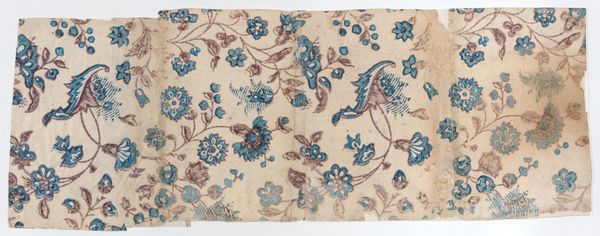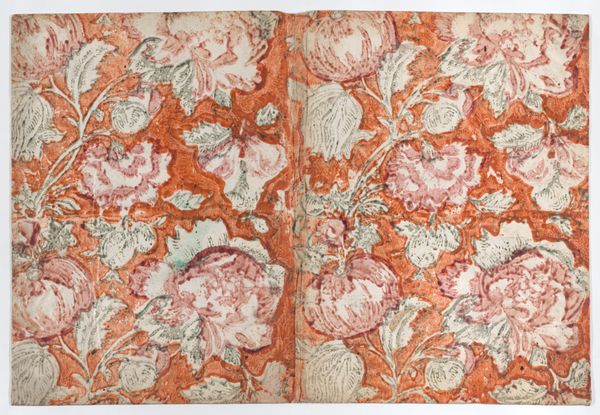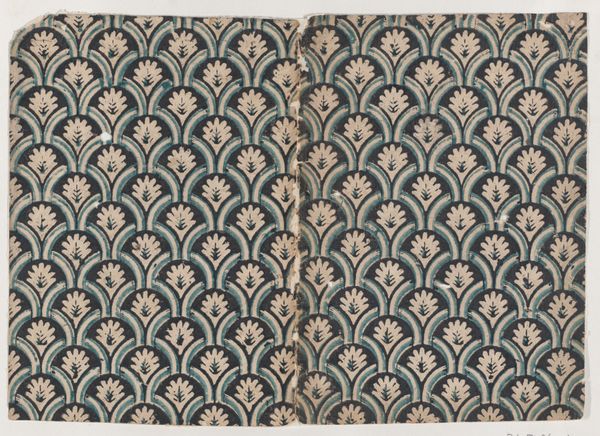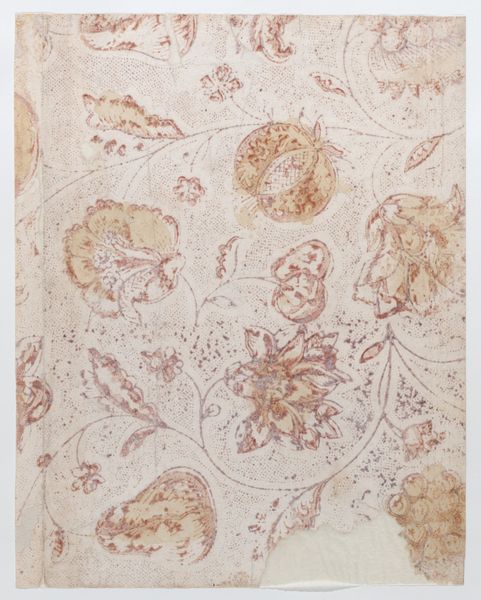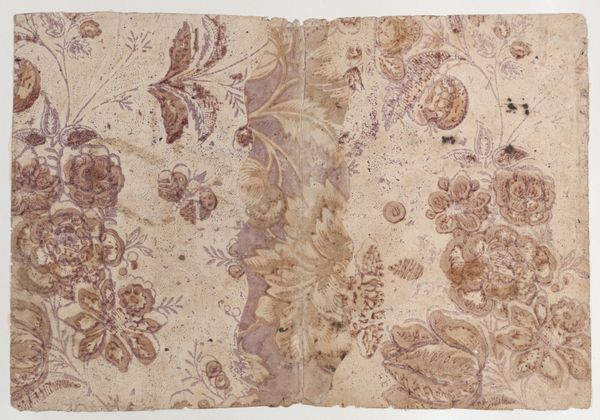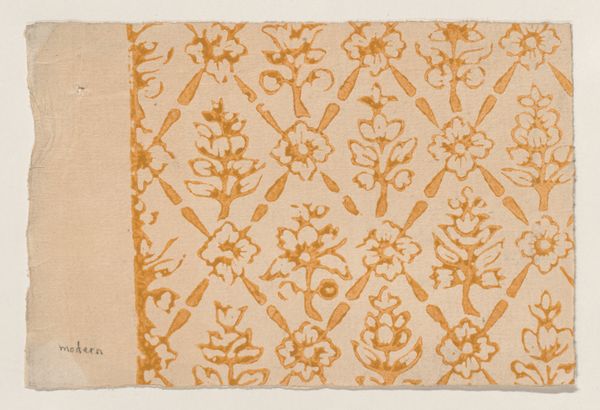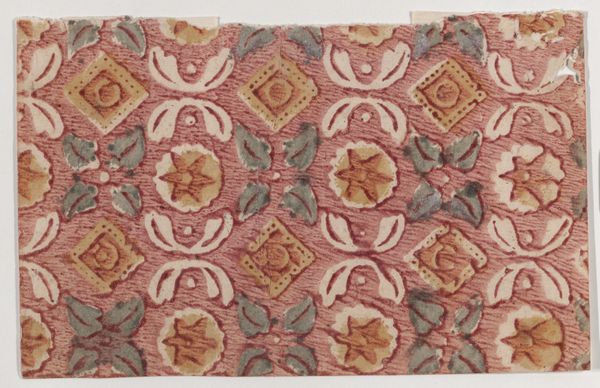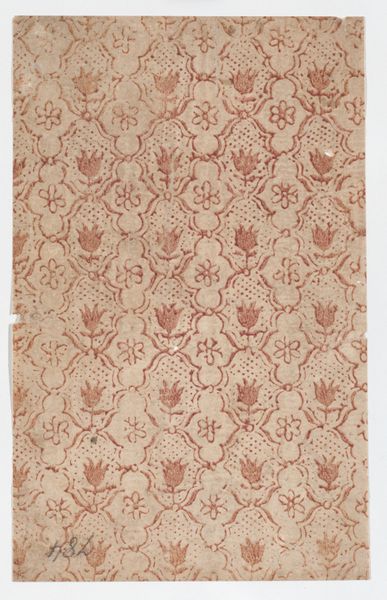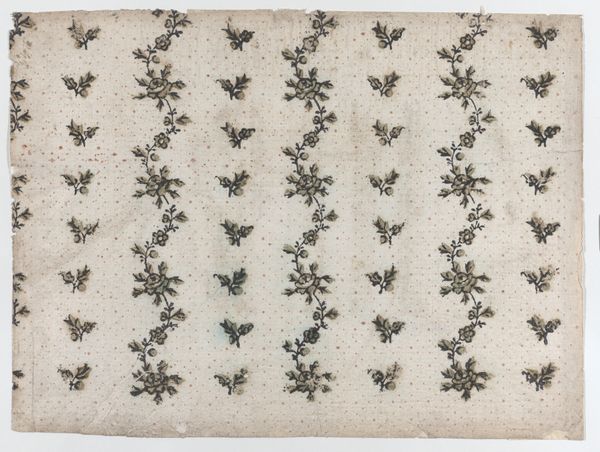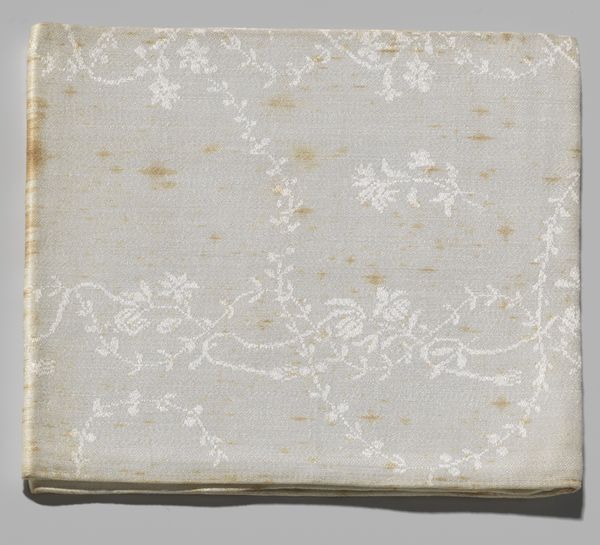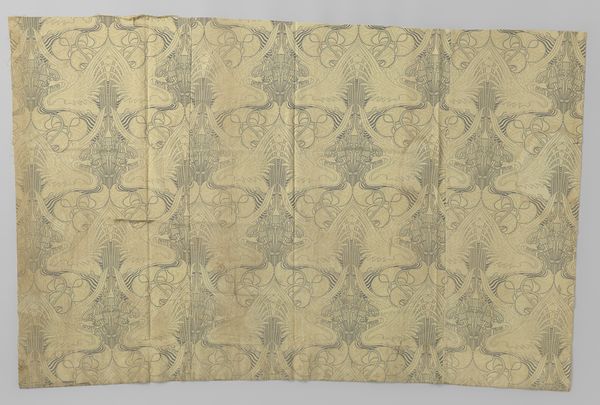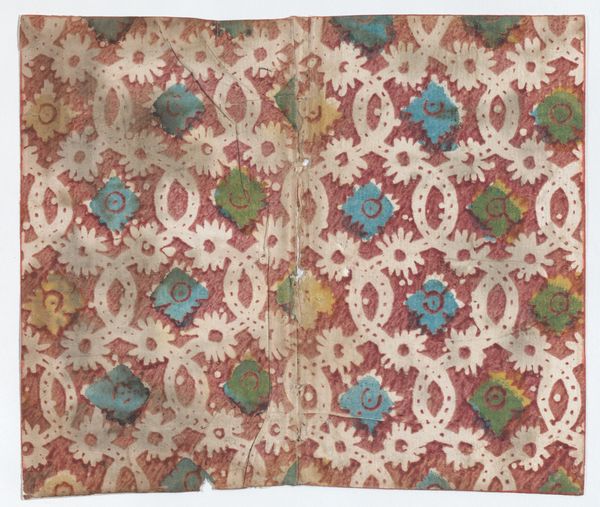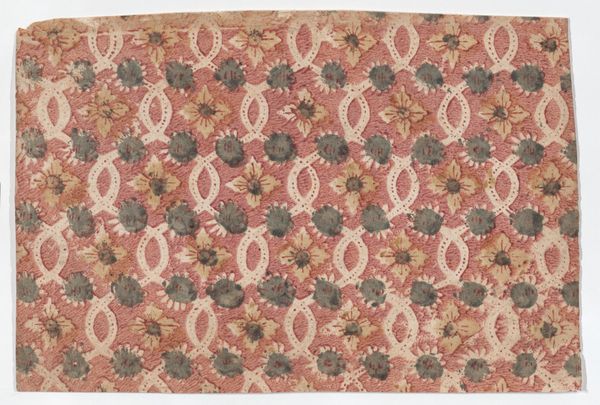
Book cover with overall paisley, dot, and stripe pattern 1800 - 1900
0:00
0:00
# print
#
abstract pattern
#
organic pattern
#
pattern repetition
#
decorative-art
#
imprinted textile
Dimensions: Sheet: 9 15/16 × 16 7/16 in. (25.2 × 41.8 cm)
Copyright: Public Domain
Editor: This is a book cover with a paisley, dot, and stripe pattern. It's anonymous and dates to around 1800-1900. It looks like a printed textile mounted on cardboard. I'm curious, what kind of production process might have created something like this? Curator: Looking at this, it screams process. The dot and stripe underlayer clearly established the foundation. Likely some kind of roller-printing perhaps, repeated mechanically before the paisley pattern was then overprinted onto the cloth. This points to an industrializing process of textile production. Were these materials rare or easily accessible, do you think? Editor: Given the date, probably more accessible, although a skilled laborer was likely required to prepare the printing. It wasn't fully democratized yet. It makes me think about the role of textiles during the industrial revolution and how printed designs like this influenced ideas of domesticity. Curator: Precisely. It also opens up the questions of consumption. This isn't simply a unique piece of art; it's designed to be reproduced, consumed, and circulated widely as a covering. Consider its functionality. It is made to protect something else of value, namely, the book. What does the covering, the material and aesthetic quality of the book jacket communicate about the object? Does the beauty and cost associated with the material elevate its owner's social status? Editor: It's almost like the pattern itself is part of a broader network, connecting production, labor, and consumption in ways that a painting, for instance, might not. So we could understand social hierarchies by examining the design and materiality of ordinary things, like book covers. Curator: Exactly! We have considered the base elements: textile, print, drawing. This provides an avenue to then understand its societal implications and production. By questioning this intersection we may gain a deeper understanding. Editor: This really gives me a new perspective on how everyday objects can reveal larger economic and social structures. Thanks!
Comments
No comments
Be the first to comment and join the conversation on the ultimate creative platform.
